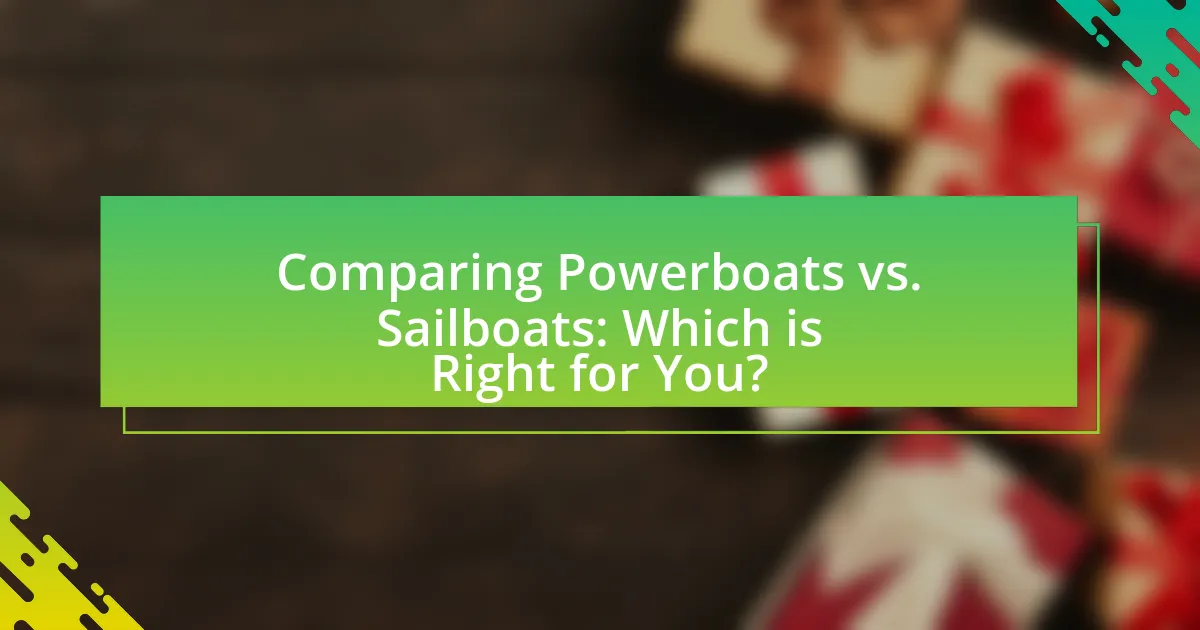The article focuses on the best family-friendly boat models for summer adventures, highlighting options such as the Bayliner Element E18, Yamaha 242X, and Sea Ray SPX 190. It defines family-friendly boats as those designed for safety, comfort, and enjoyment, particularly for children, and discusses essential features like ample space, safety equipment, and comfort amenities. The article also explores various types of family-friendly boats, including pontoon boats and deck boats, and emphasizes the importance of safety measures, suitable activities, and preparation for enjoyable family outings on the water. Additionally, it addresses common challenges families face while boating and offers strategies for enhancing the overall experience.

What are the Best Family-Friendly Boat Models for Summer Adventures?
The best family-friendly boat models for summer adventures include the Bayliner Element E18, the Yamaha 242X, and the Sea Ray SPX 190. The Bayliner Element E18 is designed for easy handling and spacious seating, accommodating up to 6 people, making it ideal for family outings. The Yamaha 242X offers a powerful engine and ample storage, perfect for water sports and family fun, with a capacity for up to 12 passengers. The Sea Ray SPX 190 combines comfort and performance, featuring a swim platform and a spacious cockpit, suitable for families looking to enjoy a day on the water. These models are recognized for their safety features, ease of use, and versatility, making them excellent choices for family summer adventures.
How do you define a family-friendly boat?
A family-friendly boat is defined as a vessel designed to accommodate the safety, comfort, and enjoyment of all family members, including children. These boats typically feature safety equipment such as life jackets, non-slip surfaces, and secure seating arrangements to prevent accidents. Additionally, they often include amenities like ample storage for gear, shade options, and easy access to water activities, making them suitable for family outings. Research indicates that boats with these characteristics enhance the overall experience for families, promoting both safety and fun during summer adventures on the water.
What features make a boat suitable for families?
A boat suitable for families typically includes safety features, ample space, and comfort amenities. Safety features such as non-slip surfaces, railings, and life jackets ensure that children can enjoy the water safely. Ample space allows for family activities, accommodating multiple passengers comfortably, which is essential for family outings. Comfort amenities like shaded areas, seating arrangements, and onboard facilities enhance the overall experience, making it enjoyable for all family members. These features collectively contribute to a family-friendly boating experience, ensuring safety, comfort, and enjoyment during summer adventures.
Why is safety a priority in family-friendly boats?
Safety is a priority in family-friendly boats because it ensures the protection of all passengers, particularly children, during water activities. Family-friendly boats are designed with features such as stable hulls, safety railings, and non-slip surfaces to minimize the risk of accidents. According to the U.S. Coast Guard, in 2020, 79% of boating fatalities occurred on boats where the operator had not received boating safety instruction, highlighting the importance of safety measures in preventing accidents. Additionally, family-friendly boats often include life jackets and emergency equipment, reinforcing their commitment to safety for families enjoying summer adventures on the water.
What types of family-friendly boats are available?
Family-friendly boats include pontoon boats, bowriders, and deck boats. Pontoon boats are spacious and stable, making them ideal for families with children, as they provide ample seating and safety features. Bowriders offer versatility with seating in the bow and a smooth ride, suitable for water sports and leisurely cruising. Deck boats combine the features of both pontoon and bowrider boats, providing a large open deck for family activities. These types of boats are designed to accommodate families comfortably while ensuring safety and enjoyment on the water.
What are the differences between pontoon boats and deck boats?
Pontoon boats and deck boats differ primarily in their design and functionality. Pontoon boats feature a flat deck supported by two or more buoyant pontoons, providing stability and ample space for relaxation and social activities, making them ideal for family outings. In contrast, deck boats have a V-shaped hull that allows for better performance in choppy waters, offering a more versatile experience for water sports and faster travel.
The stability of pontoon boats is enhanced by their wide beam, which can accommodate larger groups comfortably, while deck boats are designed for agility and speed, often equipped with powerful engines. This distinction makes pontoon boats more suitable for leisurely activities like fishing and sunbathing, whereas deck boats cater to those seeking adventure and water sports.
How do fishing boats cater to family needs?
Fishing boats cater to family needs by providing spacious layouts, safety features, and amenities that enhance comfort and enjoyment during outings. Many family-friendly fishing boats are designed with ample seating, allowing families to relax together while fishing or cruising. Additionally, these boats often include safety features such as non-slip surfaces, railings, and life jackets to ensure the well-being of all family members. Furthermore, amenities like built-in coolers, storage for fishing gear, and even entertainment systems contribute to a more enjoyable experience, making them suitable for family adventures on the water.
What are the top-rated family-friendly boat models for summer adventures?
The top-rated family-friendly boat models for summer adventures include the Bayliner Element E16, the Yamaha 242X, and the Sea Ray SPX 190. The Bayliner Element E16 is known for its spacious layout and safety features, making it ideal for families. The Yamaha 242X offers powerful performance and ample seating, perfect for water sports and family outings. The Sea Ray SPX 190 combines comfort and versatility, providing a great experience for families looking to enjoy time on the water. These models are consistently praised for their reliability, safety, and family-oriented designs, making them excellent choices for summer adventures.
What makes the Sea Ray SPX 190 a great family choice?
The Sea Ray SPX 190 is a great family choice due to its spacious layout, safety features, and versatility. The boat offers ample seating for up to 10 people, allowing families to enjoy outings together comfortably. Its deep-V hull design enhances stability and safety, making it suitable for various water conditions. Additionally, the SPX 190 is equipped with features like a swim platform and storage compartments, which cater to family activities such as swimming and picnicking. These attributes make the Sea Ray SPX 190 an ideal option for family-friendly summer adventures on the water.
Why is the Bennington 23 SSB a popular option for families?
The Bennington 23 SSB is a popular option for families due to its spacious layout and versatile features that cater to various activities. This model offers ample seating for up to 12 passengers, making it ideal for family outings and gatherings. Additionally, the boat is equipped with safety features such as high railings and a stable hull design, which enhance security for children and inexperienced boaters. The inclusion of amenities like a swim platform and storage compartments further supports family-friendly experiences on the water. These characteristics contribute to its reputation as a reliable and enjoyable choice for family summer adventures.

What should you consider when choosing a family-friendly boat?
When choosing a family-friendly boat, prioritize safety features, space, and ease of use. Safety features such as life jackets, non-slip surfaces, and reliable flotation devices are essential to protect family members, especially children. Adequate space ensures comfort and allows for activities like fishing or picnicking, accommodating the needs of all family members. Additionally, ease of use, including simple controls and stability, enhances the overall experience, making it accessible for all ages. These considerations are supported by industry standards that emphasize safety and usability in family-oriented boating.
How does the size of the boat impact family outings?
The size of the boat significantly impacts family outings by determining the number of passengers it can accommodate and the comfort level during the trip. Larger boats can comfortably hold more family members, allowing for a more inclusive experience, while smaller boats may limit the number of participants, potentially excluding some family members from the outing. Additionally, larger boats often provide more amenities and space for activities, enhancing the overall enjoyment of the outing. For instance, a study by the National Marine Manufacturers Association indicates that families prefer boats with ample space for socializing and storage, which larger models typically offer.
What is the ideal capacity for a family boat?
The ideal capacity for a family boat typically ranges from 6 to 12 people, depending on the size and type of the boat. This capacity allows for comfortable seating and movement while accommodating family members and friends during outings. For instance, a 24-foot pontoon boat can comfortably hold up to 10 people, making it suitable for family gatherings and recreational activities. Additionally, safety regulations often dictate that boats should not exceed their maximum capacity to ensure stability and safety on the water.
How does boat length affect stability and comfort?
Boat length significantly affects stability and comfort, with longer boats generally providing greater stability and a smoother ride. This is because longer vessels have a larger waterline, which helps to reduce the impact of waves and enhances the boat’s ability to remain upright in choppy conditions. For instance, a study by the National Marine Manufacturers Association indicates that boats over 25 feet tend to perform better in rough waters, offering increased comfort for passengers. Additionally, longer boats often have more space for seating and amenities, contributing to overall comfort during family outings.
What safety features are essential for family-friendly boats?
Essential safety features for family-friendly boats include life jackets, non-slip surfaces, and emergency communication devices. Life jackets are crucial as they ensure that all passengers, especially children, are protected in case of an accident. Non-slip surfaces help prevent falls, which is particularly important on wet decks. Emergency communication devices, such as VHF radios or personal locator beacons, provide a means to call for help in case of emergencies. These features collectively enhance safety and ensure a secure boating experience for families.
How do life jackets and safety equipment enhance family safety?
Life jackets and safety equipment significantly enhance family safety by providing essential protection against drowning and accidents while engaging in water activities. Life jackets are designed to keep individuals afloat, reducing the risk of drowning in case of an unexpected fall overboard or capsizing. According to the U.S. Coast Guard, 86% of drowning victims in boating accidents were not wearing life jackets, highlighting their critical role in preventing fatalities. Additionally, safety equipment such as first aid kits, fire extinguishers, and signaling devices further ensures preparedness for emergencies, allowing families to respond effectively to unforeseen situations. This combination of life jackets and safety gear creates a safer environment for families during summer boating adventures.
What role does boat design play in ensuring safety for children?
Boat design plays a crucial role in ensuring safety for children by incorporating features that enhance stability, buoyancy, and protective barriers. Specifically, designs that include wider beams and lower centers of gravity reduce the risk of capsizing, while high sides and railings prevent children from falling overboard. Additionally, many family-friendly boats are equipped with non-slip surfaces and secure seating arrangements, which further minimize the chances of accidents. According to the U.S. Coast Guard, boats designed with these safety features significantly lower the risk of drowning incidents among children, highlighting the importance of thoughtful design in promoting safe boating experiences for families.
What are the costs associated with family-friendly boats?
The costs associated with family-friendly boats typically range from $15,000 to over $100,000, depending on the size, brand, and features. For instance, smaller inflatable boats can start around $15,000, while larger, more equipped models like pontoon boats or cabin cruisers can exceed $100,000. Additionally, ongoing expenses such as maintenance, insurance, fuel, and storage can add another $1,000 to $5,000 annually, depending on usage and location. These figures reflect the general market trends and average pricing for family-friendly boats, providing a clear understanding of the financial commitment involved.
How do initial purchase prices compare among different models?
Initial purchase prices for family-friendly boat models vary significantly based on size, brand, and features. For example, entry-level models can start around $15,000, while mid-range options typically range from $30,000 to $60,000. High-end models may exceed $100,000, reflecting advanced technology and luxury features. This pricing structure is supported by market data indicating that popular brands like Sea Ray and Bayliner offer models within these price ranges, catering to different budgets and preferences.
What ongoing expenses should families anticipate?
Families should anticipate ongoing expenses such as fuel, maintenance, insurance, and storage for their boats. Fuel costs can vary significantly based on usage and boat size, with average fuel prices affecting overall expenses. Maintenance typically includes routine checks and repairs, which can average around 10% of the boat’s value annually. Insurance is essential for protecting the investment, with costs depending on the boat type and coverage level. Additionally, families may need to budget for storage fees if they do not have space at home, which can range from $100 to $500 monthly, depending on location and facility type.

How can families maximize their summer adventures on boats?
Families can maximize their summer adventures on boats by planning engaging activities, ensuring safety, and selecting the right boat model. Engaging activities such as fishing, swimming, and exploring nearby islands can enhance the experience, while safety measures like life jackets and emergency kits are essential for a secure outing. Choosing family-friendly boat models, such as pontoon boats or deck boats, provides ample space and comfort for all family members, making the adventure enjoyable. According to the National Marine Manufacturers Association, family-oriented boats have seen a 20% increase in sales, indicating a growing trend in family boating experiences.
What activities can families enjoy while boating?
Families can enjoy a variety of activities while boating, including fishing, swimming, picnicking, and wildlife watching. Fishing allows families to bond while trying to catch local species, which can be both fun and educational. Swimming provides a refreshing way to cool off, especially during summer months, and many boats are equipped with swim platforms for easy access to the water. Picnicking on board or at a scenic spot enhances the experience, allowing families to enjoy meals together in a unique setting. Wildlife watching offers opportunities to observe birds, fish, and other animals in their natural habitats, fostering appreciation for nature. These activities not only promote family bonding but also create lasting memories during summer adventures on the water.
How can fishing trips be made family-friendly?
Fishing trips can be made family-friendly by selecting boats that offer safety features, comfortable seating, and amenities for children. Family-friendly boats often include built-in safety rails, non-slip surfaces, and life jackets for all ages, ensuring a secure environment. Additionally, boats with spacious seating arrangements allow families to relax together, while features like shade can protect children from sun exposure. Providing fishing gear suitable for kids, such as lightweight rods and easy-to-use tackle, enhances the experience. According to the National Marine Manufacturers Association, family-oriented boating experiences increase participation in outdoor activities, fostering bonding and creating lasting memories.
What are some fun water sports suitable for families?
Fun water sports suitable for families include kayaking, paddleboarding, and snorkeling. Kayaking allows families to explore calm waters together, promoting teamwork and communication. Paddleboarding is accessible for all ages and helps improve balance and coordination. Snorkeling offers a chance to discover underwater life in a safe environment, making it an exciting educational experience. These activities are popular for family outings, as they cater to various skill levels and provide opportunities for bonding and adventure.
What tips can enhance family boating experiences?
To enhance family boating experiences, prioritize safety by ensuring all family members wear life jackets at all times. This practice significantly reduces the risk of drowning, as statistics show that wearing a life jacket can increase survival rates in water emergencies. Additionally, plan engaging activities such as fishing, swimming, or exploring nearby islands to keep everyone entertained and involved. Research indicates that family bonding during shared activities can strengthen relationships, making the outing more enjoyable. Lastly, maintain open communication about expectations and responsibilities on the boat, which fosters teamwork and minimizes conflicts, contributing to a smoother experience overall.
How can families prepare for a safe and enjoyable day on the water?
Families can prepare for a safe and enjoyable day on the water by ensuring they have the necessary safety equipment, such as life jackets for all passengers, a first aid kit, and a fire extinguisher. Additionally, families should check the weather forecast and water conditions before heading out, as adverse weather can pose significant risks. It is also essential to have a communication device, like a fully charged mobile phone or a marine radio, to call for help if needed. According to the U.S. Coast Guard, wearing life jackets can reduce the risk of drowning by 85%, highlighting the importance of safety gear. Furthermore, families should plan their route, inform someone on land of their plans, and ensure that the boat is in good working condition to enhance safety and enjoyment.
What are the best practices for teaching kids about boating safety?
The best practices for teaching kids about boating safety include providing hands-on training, using age-appropriate materials, and emphasizing the importance of life jackets. Engaging children in practical exercises, such as how to properly wear a life jacket and understanding basic boat operations, helps reinforce safety concepts. Research indicates that children who participate in interactive learning retain information better; for instance, the National Association of State Boating Law Administrators highlights that hands-on training significantly improves safety awareness among young boaters. Additionally, using visual aids and storytelling can make safety lessons more relatable and memorable for kids.
What common challenges do families face when boating?
Families commonly face challenges such as safety concerns, equipment maintenance, and managing children’s behavior while boating. Safety concerns arise from the need to ensure life jackets are worn and that children are supervised, as drowning is a leading cause of boating-related fatalities among children. Equipment maintenance is crucial, as families must regularly check the boat’s mechanical systems and safety gear to prevent malfunctions. Additionally, managing children’s behavior can be difficult due to boredom or seasickness, which can lead to conflicts and stress during outings. These challenges highlight the importance of preparation and awareness for a successful family boating experience.
How can families address seasickness among children?
Families can address seasickness among children by ensuring proper hydration, encouraging fresh air, and using over-the-counter remedies like antihistamines. Hydration helps maintain balance in the inner ear, which is crucial for preventing motion sickness. Fresh air can alleviate symptoms by reducing nausea, while antihistamines such as dimenhydrinate have been shown to be effective in preventing motion sickness in children. According to a study published in the Journal of Pediatrics, these methods can significantly reduce the incidence of seasickness in young passengers.
What strategies can help manage conflicts during outings?
Effective strategies to manage conflicts during outings include clear communication, setting expectations, and employing conflict resolution techniques. Clear communication ensures that all participants understand the plans and any potential issues that may arise. Setting expectations involves discussing roles and responsibilities beforehand, which can prevent misunderstandings. Additionally, employing conflict resolution techniques, such as active listening and compromise, can help address disagreements constructively. Research indicates that families who engage in open dialogue and establish ground rules experience fewer conflicts during group activities, enhancing overall enjoyment and cohesion.





